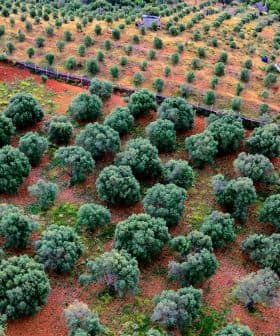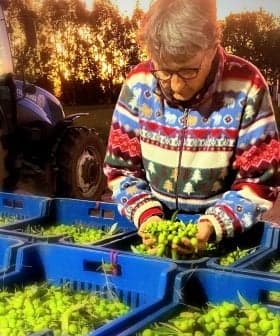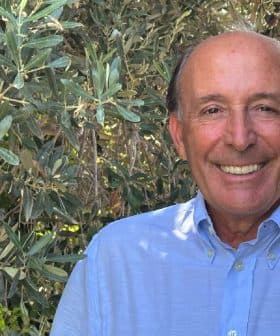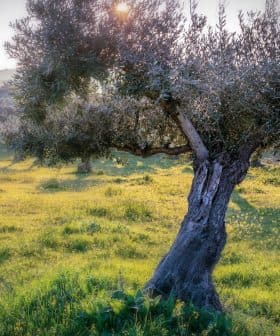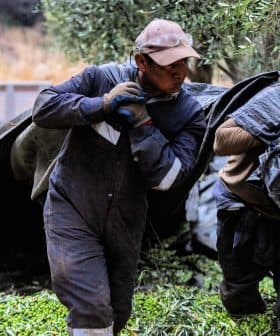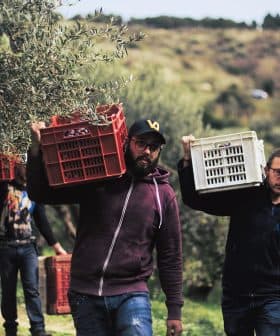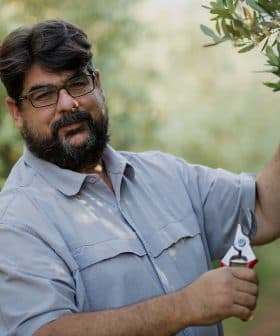Proper Application of Fertilizers May Lead to More Consistent Olive Harvests
A study finds that periodic fertilization with nitrogen, phosphate and potassium decreases the alternate bearing pattern of olive trees.
A study conducted by scientists from the University of Sfax and University of Bari found that appropriate nutrient supplements can help mitigate alternate bearing in olive trees, with well-timed fertilization reducing yield fluctuations and resource inputs. The study recommended specific fertilization schedules for olive trees during ‘on’ and ‘off’ years, emphasizing the importance of tailoring the approach to specific locations and conditions.
A recently published study has found that alternate bearing characteristics in olive trees can be mitigated by appropriate nutrient supplements.
The study, which was carried out in conjunction by scientists from the University of Sfax in Tunisia and the University of Bari in Italy, found that well-timed and systematic applications of certain fertilizers can prevent yield fluctuations while minimizing resource inputs.
Correct fertilization is an appropriate way to face and reduce alternate bearing whereas the super-intensive system is a different way of cultivation.
Alternate bearing is a common trait of fruit trees and widely considered to be a homeostatic mechanism. In ‘on’ years, trees produce a higher yield of fruit, which depletes their reserves of nitrogen, phosphate and potassium. Fruit trees then produce less fruit in ‘off’ years in order to expend those same nutrients on seed production and leaf and shoot growth.
“Our data of the four-year trial could be very useful to reduce alternate bearing in olive trees by means of an appropriate fertilization management,” Saida Bedbabis, the lead researcher from the University of Sfax, wrote in the study. “Nutrients would be applied to olive trees when required, taking into account if trees are in ‘on’ or ‘off’ years.”
According to the study, the application of certain fertilizers at particular times of the year is also a more cost-efficient and environmentally friendly way of mitigating the effects of alternate fruit bearing than the alternative: super-intensive cropping.
“Correct fertilization is an appropriate way to face and reduce alternate bearing whereas the super-intensive system is a different way of cultivation,” Giuseppe Ferrara, the corresponding author of the study, said. “With an appropriate schedule of fertilization, we try to face the real requests of [what nutrients] the trees [need to produce olives]. The super-intensive system forces the trees to produce at a maximum rate.”
The study tracked the seasonal changes in nitrogen, phosphate and potassium in the leaves and stems of trees in a Tunisian olive grove over four years.
The lowest nitrogen concentrations in the trees occurred in the spring of ‘on’ years and summer of ‘off’ years.
During ‘on’ years, the study recommended fertilizing olive trees with nitrogen in the late winter, then again during the spring and once more after the harvest. During ‘off’ years, fertilization during the spring and again in the autumn helped to sustain vegetative growth.
The lowest concentrations of phosphate were measured during the summers of both ‘on’ and ‘off’ years. Meanwhile, the lowest concentrations of potassium were measured during the winter of both years of the cycle.
“Our data confirmed that… a supply of phosphate in late autumn or winter and partially in the late spring or summer [is necessary], particularly in an ‘on’ year,” Bedbabis wrote. “A supply of potassium in January or February can be necessary for supporting the root activity and successive shoot growth of ‘off’ years and the fruit development of ‘on’ years.”
The study was carried out in Tunisia, which has a hot and dry climate for most of the year. However, Ferrara said the concept is applicable anywhere but must be tailored to a specific location.
“It [the fertilization schedule] can fit for different situations but it is for sure most effective for arid conditions where temperature are higher all year long,” Ferrara said. “[In the study] we only indicated the appropriate times for fertilization with no doses since these depend on the yield, soil characteristics, tree vigor and variety and harvest time.”
Ferrara said he plans to continue studying olive fertilization, but also plans to conduct similar studies with grape vines and pomegranate trees.


